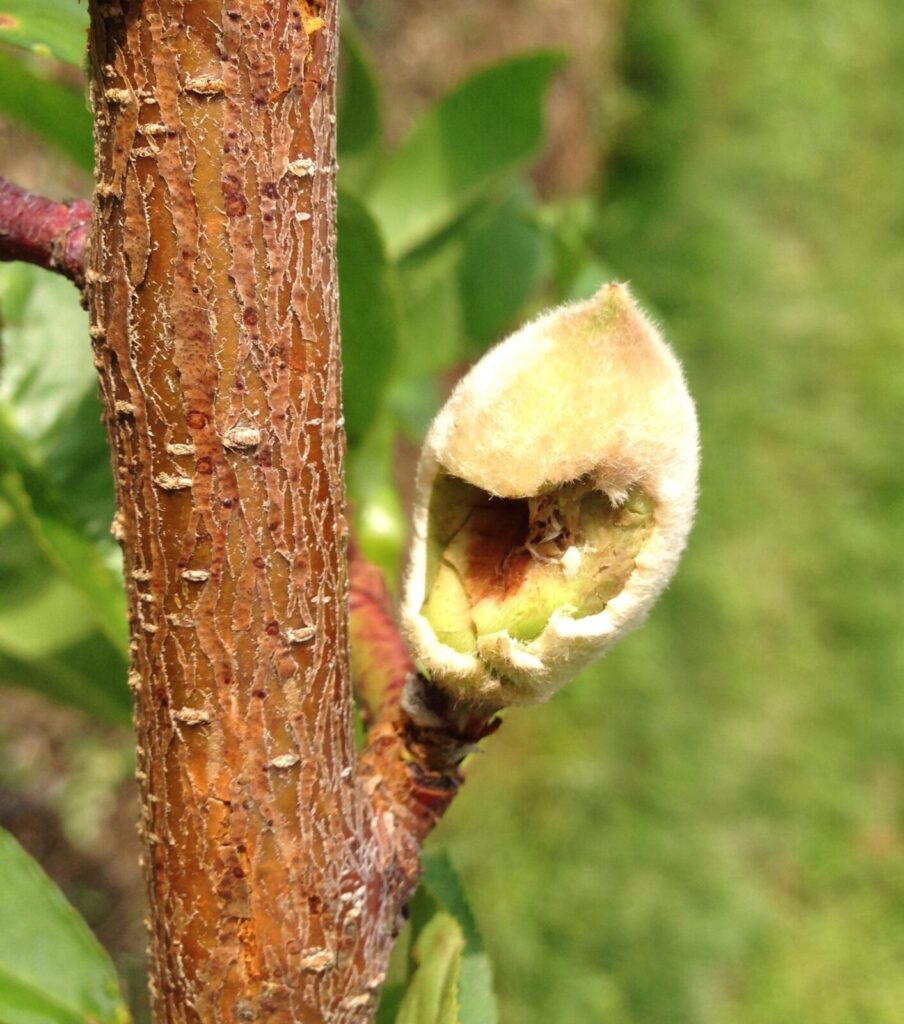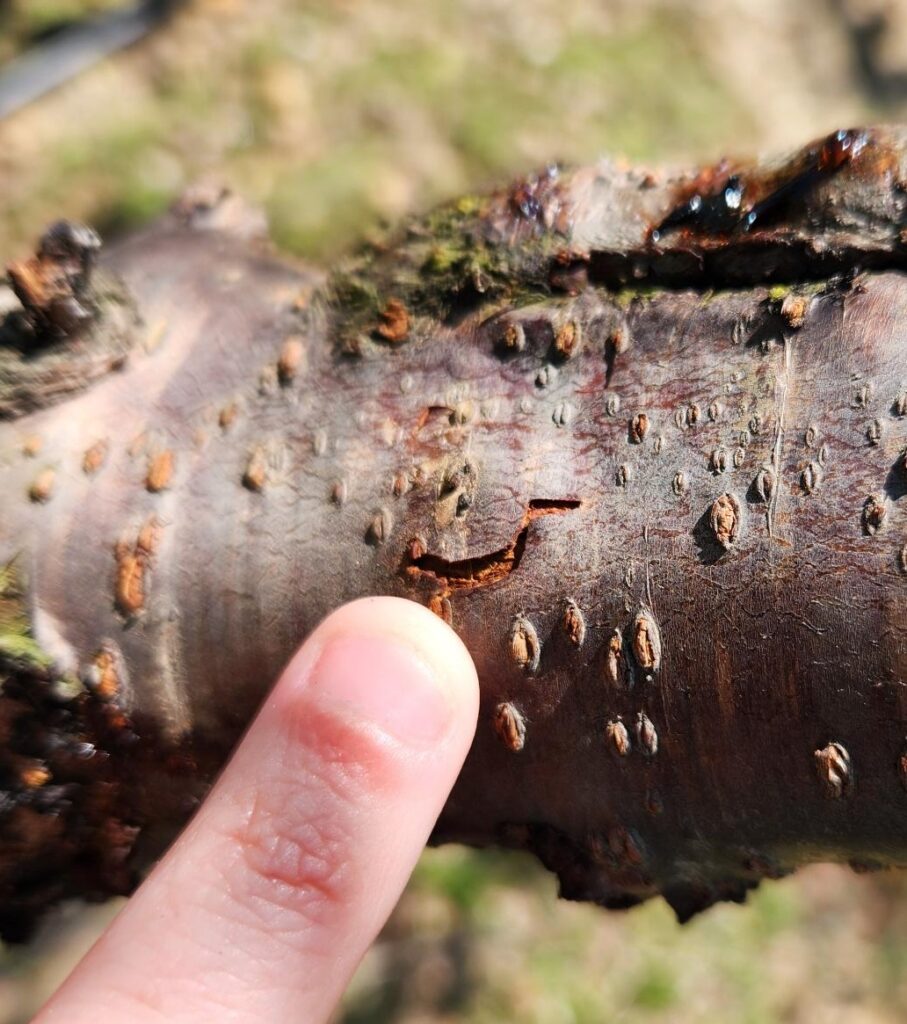
Unfortunately, with the recent storms across the southeast, many have experienced damage to their crop due to hail. While there is not much we can do for severely damaged fruit, there are actions we can take to help mitigate further issues with diseases and insect pests. While this post is a little late, hopefully it can still help you all protect your crop.
Disease Management
From Phil Brannen:
Recent hail injury, especially when combined with excessive rains, is of concern for disease control in peach orchards as we move forward through the remainder of the season. Frequent summer rains generally increase the risk of green fruit rot. If inoculum is present during the green fruit stage and if long wetness periods occur (30 hours plus), additional infections are likely to develop throughout the season. To reiterate, when present, green fruit rot dramatically increases the risk of heavy pre- and post-harvest brown rot pressure. I would shift from sulfur-based programs to captan on hail damaged orchards – assuming that sufficient non-damaged fruit will be available for harvest. Removal of hail damaged fruit may not be economically feasible, but removal of this fruit from the orchard would be desirable. Again, it is recommended that the FRAC 3, 7, and 11 fungicides be reserved for late-season pre-harvest sprays. However, utilization of these may be judiciously warranted if hail damage is severe. Adjust cover sprays or initiate pre-harvest brown rot sprays early when disease pressure is high.
Hail injury also greatly increases the susceptibility of fruit to bacterial spot infection, especially if the disease is present in the orchard prior to hail. As soon as possible after hail injury, make an application of Mycoshield (or generics of oxytetracycline) in sufficient water to provide for thorough coverage of fruit and foliage. Low rates of copper might also have an impact on disease, and some anecdotal information would support copper use for bacterial canker diseases that can result on injured stem/scaffold/trunk tissues. A tank mix of Mycoshield (or generics of oxytetracycline) with low copper rates could not hurt, and it might help.
Leucostoma and other fungal cankers are also likely to be worse on hail-injured trees. Though research-based information is not specifically available for fungicides and canker management following hail damage, Topsin M may have some activity against canker diseases that come in on injured tissue.

Insect Pest Management
From Brett Blaauw:
Unfortunately, insect issues can also increase post hail damage. In particular, when the bark is ruptured (like the image above), the wounds release chemicals that can attract lesser peachtree borer and these new cracks provide a place for the females to lay their eggs. As such, orchards that were hit with hail are going to be more susceptible to increased injury from lesser peachtree borer. Particularly in young orchards and orchards not under mating disruption for borers, it will be important to stay on top of the cover sprays.
While covers sprays of pyrethroids (e.g. bifenthrin, esfenvalerate, beta cyfluthrin, or lambda cyhalorthrin) targeting plum curculio and/or OFM are not the best management option for borers, with the potential increased activity of lesser peachtree borer in hail-damaged orchards, these cover sprays will be important for suppressing the borer populations.
Keep an eye on these orchards throughout the season. If increased damage due to borers is observed, it will be important to come back next year to target those trees during the delayed dormant timing. Consider adopting mating disruption and/or hit the trees with lorsban or esfenvalerate to help clean up the lesser peachtree borer population going into the 2026 season.
Please see the 2025 Southeastern Pest Management and Culture Guide for rates and additional pest management recommendations.

Additionally, if you have any additional questions on this topic or any other management issues in your peach orchards, please contact your local agent.
Take care everyone!